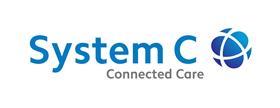With a drive for health and social care integration ever more pressing, Markus Bolton and David Grigsby explore the vital role that sharing of data and information can play in transforming care services
![]()
This is paid-for content from our commercial partners. Find out more
The long-awaited integration of health and social care seemed a step closer with the promise in the NHS long-term plan of a nationwide structure of Integrated Care Systems by 2021. ICSs hold up real prospects of more joined up commissioning and services in support of local populations.
Sponsored by
Covid-19 may have put the brakes on organisational progress this year. However, the national response to the pandemic has also thrown into sharp relief structural and funding problems in the health and care system, and this may yet serve to accelerate action.

The impact of transferring people out of hospital into care homes at the outset of the pandemic, the lack of PPE and testing in care homes and the fragmented and fragile nature of care home provision itself – all these have helped convince the nation of the need for wholesale transformation.

There are strong financial arguments as well as human ones. Age UK estimated that lost bed days in the NHS due to a lack of social care topped the 2.5 million mark between June 2017 and December 2019 at a cost of £27,000 every hour. As the health and social care select committee said when it called for urgent action in October, “doing nothing is no longer an option”.
As well as addressing funding and structures, it is vital we acknowledge the role that the sharing of data and information can play in transforming our care services. NHSX’s Tech Plan requires local authorities and the NHS to better plan and commission services with the support of tech. It is pushing for every ICS to have a shared care record in place by September 2021, so information can be shared safely across NHS and local authority care settings.
A big part of the tech agenda involves the setting of standards to enable interoperability. This is a massive task, covering not just technical standards (FHIR, MESH), but also semantic and coding standards, information protocols, IG and workflows.
These are all really big issues - both politically and technically – but essential to adopting a whole system approach committed to eliminating variation in the treatment of some of the most vulnerable people in our society.
But the scale of the work ahead doesn’t mean that we can’t make some progress on the ground today. Already, some health and social care organisations are taking important steps down this path.
Social care teams in Wirral Council and Lancashire County Council, for example, are both using a Liquidlogic interface with their hospital electronic patient record systems which allows for the real-time exchange of assessment and discharge notifications, using NHS Digital’s MESH standards. With this level of integration, benefits include smoother discharges, better targeted care provision, improved recovery rates and less intensive reablement intervention.
Similarly, shared care records are currently deployed across a third of the country and are already making a real difference here in terms of improving workflows and co-ordination between settings.
In St Helens, the Graphnet shared record underpins the ICS’s Contact Cares “front door” service and single point of contact for all residents. By being able to rapidly mobilise community services, the Contact Cares team of over 350 social care and healthcare practitioners such as nurses, occupational therapists and physiotherapists, has helped deliver a consistent reduction in delayed transfers of care, for example, and slower rates of growth in non-elective admissions.
In its shared care record, the Frimley ICS is able to notify wider care teams of any transfer of care in a patient’s journey – due to an unscheduled event such as sudden ill-health or injury, for example. This is particularly important where an early intervention could improve that individual’s experience and outcomes.
Other areas, such as the Bristol care community, are looking at joining workflows across different organisations within a wider region. They are specifically looking at improving the complex discharge process and care coordination needed between acute, community and social care services in order to ensure discharges are as quick and safe as possible. Using our CareFlow Connect care co-ordination platform to do so will mean valuable time is not wasted in inefficient communication but can be spent efficiently and productively with colleagues and patients.
Real progress is clearly already being made around the country in terms of tech-supported integration. Lessons learnt from covid-19 are also likely to accelerate a much deeper level of integration between the NHS and local government. The pandemic has been a stark reminder of the effect health inequalities and the wider determinants of health have on the people of the UK.
Already care systems with advanced shared records and population health management systems in place are looking at linked datasets to better understand wider determinants, to target care and prevention activities and to inform service design. As the care system seeks to apply these lessons, the conversation will expand to include housing, education, ethnicity, local economic policy, the environment and how we tackle the societal issues that surround them.
In answer to the question in the title: the future is probably here - in part at least, just not yet evenly distributed. We should focus now on getting some of these early gains adopted more uniformly. This will help create momentum as we tackle the bigger integration challenges ahead.
For more information click here.
Markus Bolton is joint CEO of System C and heads the System C & Graphnet Care Alliance
David Grigsby is managing director of System C’s social care subsidiary, Liquidlogic



























No comments yet